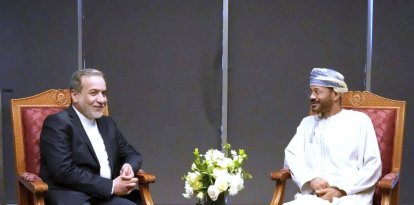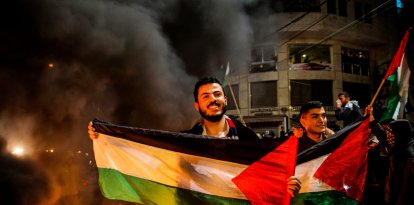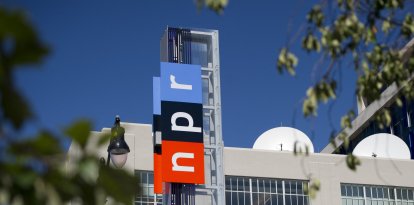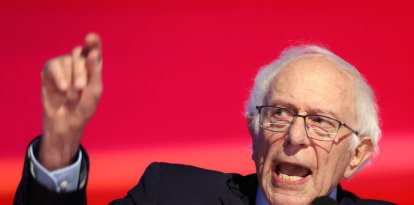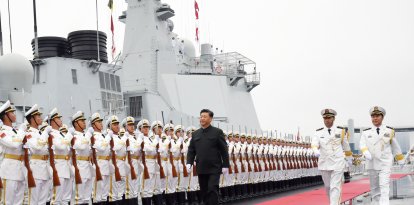Palestinians are addicted to an endless cycle of ‘nakbas’
Israel’s pushback against rocket fire generated the usual condemnations. But the fighting with a rogue terror group based in Gaza is just the latest chapter of a century-old war against the Jews.
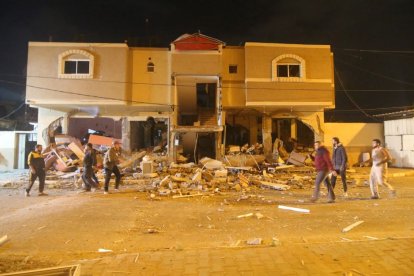
(Cordon Press)
The most important facts about the latest violence in the Middle East were the ones that were left out of The New York Times’ sidebar explainer published in the wake of a series of Israeli strikes on the Gaza Strip. “What Is Islamic Jihad and Why Is Israel Targeting It?” by correspondent Raja Abdulrahim did contain some pertinent facts. Among them were that Palestinian Islamic Jihad (PIJ)—the second-largest Palestinian “armed group”—has an uneasy relationship with the much bigger Hamas, also based in the coastal enclave; and that both have been designated as terrorist organizations by the United States, and receive funding and arms from Iran.
Yet Abdulrahim’s explanation of the goal of Islamic Jihad was purposely vague. She left out the fact that it is an Islamist party that believes that the entire country—Israel and the territories—should be governed solely by Islamic law. Even more important, she wrote that it was created in the 1980s “to fight the Israeli occupation.” To most Times readers and consumers of other corporate media outlets, that sounds like the organization wants to end Israel’s “occupation” of Judea and Samaria (the “West Bank”), as well as Jerusalem. But for Palestinian Arabs, the phrase means something different.
When members of PIJ, or for that matter, those affiliated with its Hamas rivals or even the so-called “moderates” of Fatah—whose leaders corruptly run the Palestinian Authority— speak of “occupation,” they are not referring to those territories that Israel gained during the 1967 Six-Day War, and which the international community and the media wrongly describe as “Palestinian” rather than disputed. As far as PIJ is concerned, every inch of Israel is “occupied.” It regards the creation of the Jewish state 75 years ago as a nakba—a “catastrophe” or “disaster”—as well as a crime that must be expunged by violent struggle.
As far as PIJ is concerned, every inch of Israel is “occupied.”
This is important because this coming weekend when the anniversary of Israel’s birth is commemorated, supporters of the Palestinians will be observing “Nakba Day.” For them, May 15—the day after Israel declared its independence on May 14, 1948—defines the Palestinian existence as a martyred people whose grievances must be nurtured and stoked until the Jewish state and the history of the last century are erased. The point of Palestinian politics is not to create a state alongside Israel or any other theoretically constructive goal. It is to create an endless series of events that are, in effect, mini-nakbas so as to keep their cause alive and fueled by rage at Israel’s ongoing ability to survive and thrive.
These omissions in the Times explainer are not historic minutiae. They are the most important things to know about the group and why it remains at war with Israel. They also provide essential context that explains that the current round of fighting was not just part of a “cycle of violence” that Abdulrahim falsely claimed was begun by the Israeli military. It is a function of a century-old war whose purpose is the eradication of Israel.
That particular piece is a classic example of media bias that is a function of the Times’ editorial agenda. It also points to a broader problem that dominates discourse about the conflict that is a deliberate exercise in obfuscation in which everyone pretends that it is all a misunderstanding between two parties that don’t know how to compromise.
The current exchange was initiated by PIJ’s decision to “retaliate” against Israel with rocket and missile fire because of the death of one of its leaders, Khader Adnan. He had been arrested for his role in organizing terrorism and died as a result of a prolonged hunger strike he undertook to gain his release. Adnan refused both food and medical treatment, and eventually succumbed to what was essentially an act of suicide since Israeli authorities chose not to forcibly feed or treat him.
Adnan’s goal was to provide his people with yet another martyr to mourn and celebrate. But in a larger sense, it was an act of theater in which the nakba can be shown to be ongoing rather than marooned in history.
In this case, his death was commemorated by his comrades by the indiscriminate firing of rockets and missiles on Israel’s civilian population. Israel’s government rightly responded by attacks on PIJ leaders in Gaza to show that they could not terrorize Israelis with impunity. The strikes that the Israel Defense Forces dubbed “Operation Sword and Shield” have generated the usual round of condemnations from the international community because, despite the great care that the IDF takes to limit civilian casualties, some of the terrorist leaders’ families were killed alongside them. The Biden administration did its usual dance, supporting Israel’s right to defend itself while still demanding that it stand down and cease doing so.
Israel’s government rightly responded by attacks on PIJ leaders in Gaza to show that they could not terrorize Israelis with impunity.
Israeli Prime Minister Benjamin Netanyahu and his colleagues are, as always, faced with the difficult decision about how far they should go to stamp out the ability of groups like PIJ to terrorize the Israeli people.
Former Israeli Prime Minister Ariel Sharon’s disastrous 2005 decision to withdraw every Israeli settlement, settler and soldier from the Gaza Strip set in motion the events that led to it becoming an independent Palestinian state in all but name, governed by Hamas terrorists. Since then—and contrary to Sharon’s foolish expectations—that has allowed both Hamas and PIJ to turn the strip into a fortified enclave, safe in the knowledge that Israeli leaders are deterred from rooting them out because of the enormous cost in lives, both Israeli and Palestinian, that would entail, in addition to the storm of international criticism that such an action would provoke.
Former Israeli Prime Minister Ariel Sharon’s disastrous 2005 decision to withdraw every Israeli settlement, settler and soldier from the Gaza Strip set in motion the events that led to it becoming an independent Palestinian state in all but name, governed by Hamas terrorists.
And so, Israel has limited itself to periodic strikes that the IDF describes as “mowing the grass,” in which the terrorists’ ability to inflict harm is cut back but never entirely eliminated. That is unfortunate, but it allows Jerusalem to manage the conflict rather than to put the country perpetually at the mercy of the whims of Islamist killers.
Hamas and PIJ have no practical political goals. But they do have the ability to keep creating more nakbas by sacrificing the lives of their people—whether in the form of theatrical prison suicides or those killed while acting as human shields for those who foment, plan and carry out terrorist attacks on Israelis.
That is why describing what happened this week in Gaza as part of a cycle of violence isn’t just inaccurate. It misses the point of the conflict.
The Palestinians’ nakba narrative is deeply self-destructive because it valorizes their intransigent refusal to accept the reality that the Jews had returned in great numbers to their ancient homeland and that now, the country had to be shared with them. By falsely labeling the true indigenous people of the country—the Jews—as colonial interlopers, they maintain their status as victims of “white privilege” in the mindset of contemporary intersectional ideology in which Jewish rights are erased.
The Palestinians’ nakba narrative is deeply self-destructive because it valorizes their intransigent refusal to accept the reality that the Jews had returned in great numbers to their ancient homeland and that now, the country had to be shared with them.
The commemoration of their historic defeat in 1948 ignores the fact that there was an exchange of refugee populations with hundreds of thousands of Arabs fleeing or forced out of their homes in what is now Israel while an even greater number of Jews were also thrown out of theirs throughout the Arab and Muslim worlds.
Those who join in their mourning seem to think that if they protest loud enough and long enough that someday the Israelis will tire of the battle to preserve their existence and give up. This will never happen. But by clinging to their victimhood and creating a political culture in which their national identity is inextricably tied to a futile war to destroy Israel, Palestinians don’t just keep the memory of the “catastrophe” alive. In this way, they are perpetually reliving and recreating it in incidents large and small.
That is the one fact everyone needs to grasp if they are to understand recent events and why these incidents are likely doomed to be endlessly repeated until the day dawns when the Palestinians tire of this pointless, tragic, and for them, never-ending sacrifice.
© JNS
RECOMMENDATION


